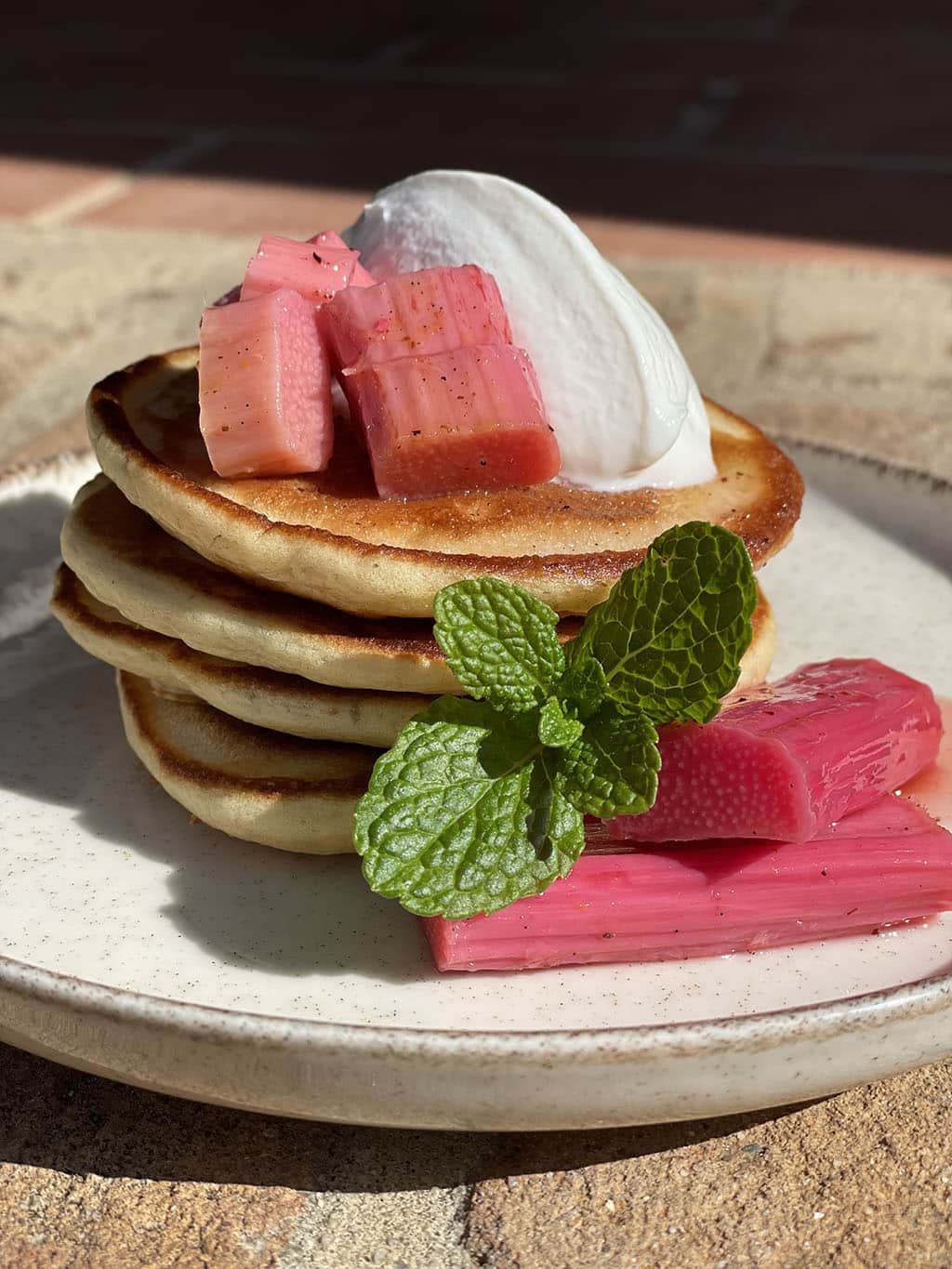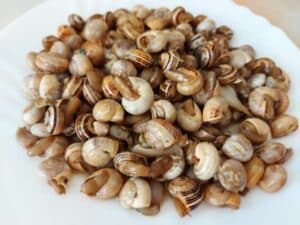History suggests that the English forced rhubarb was cultivated by accident. Unwittingly covered, over winter, in London’s Chelsea Physic Garden, the rhubarb stocks sprung up months earlier than a normal outdoor crop beaming with vibrant pink colour.
This discovery motivated gardeners from London to Yorkshire to construct special forcing sheds in order to cultivate it; the area that is now known as ‘The Rhubarb Triangle’ or, ‘Tusky Triangle’ in Yorkshire.
Rhubarb starts outside, where its crowns are placed for the first two years to develop and gain strength. After that, they are moved into sheds for the darkness to transform them. The fibrous textures become delicate and tender, the green stems turn pink, and the lack of light forces them to grow tall and strong.
One thing, however, remains unchanged and it is their tartness. Biting into a stem of fresh rhubarb cuts as a sharp knife, and no wonder it is often consumed fresh by dunking into a bowl of sugar.
Similar to sorrel, rhubarb is rich in oxalic acid, and is almost the definition of acidic. Its stems are the only consumable part, a rule that must be respected as other parts can cause some digestive discomfort.
When administered with knowledge, rhubarb’s application and utility are vast. It is rich in vitamin C and A, as well as folate, riboflavin and niacin, and more, helping with a range of ailments from heart problems, to inflammation and eye health.
Around the 16th-17th century, these properties turned rhubarb into a much sought-after product, so much so that, at some point, the Russian Empire established a trade monopoly on it.
Russia grew rhubarb of its own. It flourished along the banks of the Volga River and across the plains of Siberia. In fact, some suggest that its Latin name Rheum rhabarbarum refers to barbarians who lived beyond the Rha, the present-day Volga River. But it was not exactly the local rhubarb that everyone was after.
At the very time when demand for rhubarb in Europe was high, the Russian Empire expanded its border with China setting the stage for an excellent trade partnership with the region. Mongolian and Chinese varieties of rhubarb were known for their superior medicinal properties, and Russia exploited its position to control its trade and travel.
However, with the conclusion of the Opium Wars and the opening of ports in China, the monopoly was lost causing the Russian crown to seize this activity almost instantaneously.
At the turn of the 19th century, rhubarb began its move from pharmacies to kitchens, where it has also established a firm presence since. In its homeland of Russia, it is used in pickles, salads and drinks. One of the most famous applications is to make a kisel, a warm dessert beverage typically based on fruit juice and thickened with starch. In Finland, it is called mehukeitto.
In much of the English-speaking world, it is used in pies, tarts and crumbles that are often accompanied by custard. In Germany, it is served stewed topped with vanilla cream. Italians often crown panna cotta with some poached rhubarb.
For its acidic properties, it can equally accompany fish, something fatty like mackerel, and complement meats, for instance a pigeon.
Considering its vast medicinal and culinary repertoire, rhubarb is a genuine delicacy, especially at the southern table, such as Portuguese. When it makes an appearance, it turns any ordinary dinner into a glorious banquet.
By Dr. Irina Mikhailava
|| features@algarveresident.com
Dr. Irina Mikhailava, a chef and a good food champion, happily residing in the Algarve and eating all over the world with an appetite for learning, sharing and writing. Instagram: incompanyoffood




















